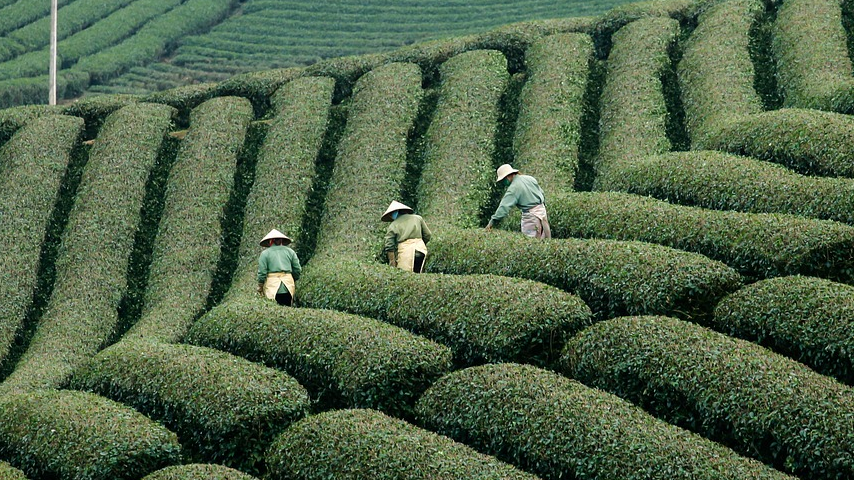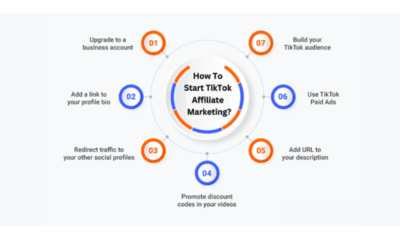Business
Artificial Intelligence and Big Data: Transforming the Crop Outlook through Predictive Analytics

Introduction
The agricultural industry is facing unprecedented challenges in the face of climate change, population growth, and evolving consumer demands. Farmers are tasked with increasing productivity, improving sustainability, and managing risks more effectively than ever before. Fortunately, the convergence of Artificial Intelligence (AI) and Big Data is opening up new frontiers for agricultural innovation. Through predictive analytics, these technologies are transforming how crop yields, market trends, and potential risks are forecasted, ultimately leading to more informed decision-making and enhanced crop health monitoring.
In this article, we will explore how AI and Big Data are reshaping the crop outlook, providing farmers and agricultural stakeholders with powerful tools to optimize crop production, ensure sustainability, and predict future outcomes with greater accuracy.
The Role of Artificial Intelligence in Agriculture
Artificial Intelligence refers to the simulation of human intelligence processes by machines, especially computer systems. In agriculture, AI is leveraged for tasks such as data analysis, automation, and decision-making. AI systems can process vast amounts of data, recognize patterns, and make predictions—tasks that were traditionally labor-intensive and prone to human error.
In the context of crop production, AI is used to enhance decision-making by providing real-time insights into everything from weather forecasts to pest infestations. By utilizing machine learning algorithms and deep learning models, AI can predict future trends, allowing farmers to adjust their practices to maximize efficiency and reduce risk.
The Power of Big Data in Agriculture
Big Data refers to the large volumes of structured and unstructured data generated in agricultural activities, including soil conditions, crop growth patterns, weather data, and market trends. This data, when analyzed effectively, provides farmers with valuable insights into optimizing their crop production and operational efficiency.
The ability to gather and process such massive amounts of data is made possible by modern computing technologies, cloud storage, and IoT (Internet of Things) devices such as sensors, drones, and satellites. Big Data, in combination with AI, creates powerful predictive models that can forecast everything from crop yields to market fluctuations, allowing farmers to make better-informed decisions.
Predictive Analytics: The Key to Transforming Crop Outlook
Predictive analytics is the backbone of AI and Big Data applications in agriculture. It involves using statistical algorithms and machine learning techniques to analyze historical data and forecast future outcomes. In the context of crop production, predictive analytics can be used to:
- Forecast Crop Yields
Predicting crop yields is one of the most crucial aspects of modern agriculture. By analyzing historical data, environmental variables, and current crop conditions, AI-powered predictive models can estimate how much crop will be produced at the end of the growing season. This forecast helps farmers prepare for harvest and enables better resource management, such as optimizing irrigation and fertilizer use.
AI systems can analyze data from sensors embedded in the soil, satellite images, and weather forecasts to assess soil moisture levels, temperature, and other key factors affecting crop growth. By cross-referencing this data with historical trends, AI can generate accurate yield predictions for different crop varieties. - Monitor Crop Health and Growth Patterns
One of the most significant benefits of AI and Big Data in agriculture is crop health monitoring. Using image recognition algorithms and remote sensing technologies, AI can analyze satellite or drone images to identify signs of stress in crops, such as nutrient deficiencies, pest infestations, or diseases. Early detection allows farmers to take proactive measures, such as applying fertilizers or pesticides, before the problem escalates, thus improving yields and minimizing waste.
AI can also track plant growth in real-time by processing data from IoT devices, such as soil sensors and weather stations. This continuous flow of information helps farmers make timely decisions regarding irrigation schedules, pest control measures, and harvest planning. - Predict Market Trends and Price Fluctuations
In addition to improving on-the-ground crop management, AI and Big Data also offer powerful tools for predicting market trends. By analyzing data from historical crop prices, demand forecasts, and market conditions, predictive models can estimate how prices will fluctuate based on factors like supply shortages, transportation costs, and consumer demand.
By having a clearer picture of market trends, farmers can adjust their planting strategies, optimize the timing of their harvests, and make smarter decisions about when and where to sell their crops. This ability to predict market trends can be a game-changer in an industry that is often vulnerable to price volatility. - Predict and Manage Risks in Agriculture
The agricultural sector is highly susceptible to risks such as extreme weather events, pests, diseases, and market instability. AI-powered predictive analytics can be used to assess these risks and provide early warnings, allowing farmers to take preventative measures.
For example, AI systems can analyze weather patterns and predict the likelihood of extreme events like droughts, floods, or frosts. Based on these predictions, farmers can adjust irrigation schedules, harvest earlier, or take measures to protect their crops. In the event of a pest outbreak, AI can analyze data from crop health monitoring systems to predict the severity of the infestation and suggest targeted interventions.
Furthermore, AI can help farmers mitigate financial risks by predicting shifts in market conditions, crop yields, and commodity prices. This information allows for better financial planning and investment strategies.
Real-World Applications of AI and Big Data in Crop Outlook
Several companies and organizations are already harnessing the power of AI and Big Data to transform crop production and forecasting. Here are some examples of how these technologies are being used in the real world:
- IBM’s Watson Decision Platform for Agriculture
IBM’s Watson Decision Platform is an AI-powered tool that integrates weather data, satellite images, sensor data, and market information to provide actionable insights for farmers. The platform’s predictive analytics capabilities allow farmers to forecast crop yields, assess environmental risks, and optimize farm operations. It also incorporates AI-powered crop health monitoring, enabling real-time analysis of crop conditions and early detection of diseases and pests. - John Deere’s AI-Powered Agriculture Solutions
John Deere, a leading agricultural machinery manufacturer, has developed a suite of AI-powered tools to assist farmers with everything from planting to harvesting. Their AI systems are used to predict crop yields, optimize irrigation and fertilization, and detect pests and diseases. John Deere’s equipment is also equipped with Big Data sensors, enabling continuous monitoring of field conditions and providing farmers with actionable insights in real time. - Climate Corporation’s FieldView
The Climate Corporation’s FieldView platform uses Big Data and AI to provide farmers with actionable insights into their field conditions. The platform combines weather data, historical yield information, and in-field sensor data to generate predictive models that forecast crop performance, monitor crop health, and suggest optimal planting and harvesting strategies. The platform helps farmers make data-driven decisions that improve efficiency and productivity while reducing costs.
Challenges and Opportunities in AI and Big Data for Agriculture
While AI and Big Data present numerous opportunities for improving crop outlooks, several challenges remain. One of the key challenges is the need for high-quality data. Inconsistent, incomplete, or inaccurate data can skew predictions and lead to suboptimal decisions. Furthermore, data privacy and security issues are also concerns, as farmers must ensure that their data is protected from unauthorized access or misuse.
However, the potential of AI and Big Data in agriculture is vast. As technology continues to evolve, we can expect more advanced and accessible tools for crop yield forecasting, health monitoring, and risk management. With increased investment in data infrastructure and improved integration of AI solutions into farming practices, the future of agriculture looks more efficient, sustainable, and resilient.
Conclusion
Artificial Intelligence and Big Data are revolutionizing the way we forecast crop yields, market trends, and potential risks in agriculture. Through the power of predictive analytics, these technologies are enabling farmers to make data-driven decisions that improve productivity, reduce waste, and enhance sustainability. The integration of AI-powered crop health monitoring systems allows for early detection of problems, optimizing crop management and increasing resilience against environmental challenges.
As AI and Big Data continue to evolve, the agricultural industry will be better equipped to face the challenges of the future. With predictive analytics at the helm, farmers can look forward to a more efficient and secure crop outlook, ensuring a stable food supply for the growing global population.
Business
Filmora Download for Windows 10 ✓ Get Filmora 14.4.2 Now!

If you’re into video editing, you’ve probably come across Wondershare Filmora — a powerful, user-friendly editing software designed for creators of all skill levels. With its sleek interface, built-in effects, and support for 4K video, it’s no wonder Filmora has become a go-to choice for YouTubers, content creators, educators, and marketers. The latest version, Filmora 14.4.2, is now available for Windows 11 key bringing even more features and improvements to your editing workflow.
In this article, we’ll walk you through the latest version of Filmora, how to download it for Windows 10, what’s new in version 14.4.2, and why it’s one of the best video editing tools you can use today.
✅ Why Choose Filmora for Windows 10?
Whether you’re a beginner or an experienced editor, Filmora has something to offer. Here are some standout reasons to choose Filmora:
- User-Friendly Interface: The drag-and-drop timeline and intuitive layout make it easy to start editing right away.
- Rich Effects Library: Access to transitions, filters, overlays, music, and motion elements.
- Fast Performance: Optimized for Windows 10, Filmora runs smoothly even on mid-range PCs.
- Built-in Screen Recorder: Ideal for tutorials, gameplay, and presentation videos.
- Affordable Licensing: Compared to professional software like Adobe Premiere Pro, Filmora offers excellent value.
📥 How to Download Filmora 14.4.2 for Windows 10
Getting started with Filmora 14.4.2 is simple. Here’s how you can download and install it on your Windows 10 PC:
Step 1: Visit the Official Website
Go to the official Wondershare Filmora website: https://filmora.wondershare.com
Step 2: Click on “Free Download”
You’ll see a prominent “Free Download” button for Windows. Click it, and the Filmora installer (around 1–2 MB) will begin downloading.
Step 3: Launch the Installer
Once the installer is downloaded, double-click the .exe file to begin the installation process.
Step 4: Follow Installation Instructions
Choose your language and destination folder, then click “Install.” The setup wizard will handle the rest. Within minutes, Filmora will be ready to use.
Step 5: Sign In or Create a Wondershare ID
To access all features, you’ll need to sign in or create a Wondershare account. You can start with the free version, but some features will be watermarked until you activate a license.
🆕 What’s New in Filmora 14.4.2?
Version 14.4.2 brings several enhancements and new features that make editing faster and more enjoyable. Here’s a quick look at the highlights:
- Improved AI Features
- AI Smart Cutout: Easily remove backgrounds or isolate subjects with AI-powered masking.
- AI Audio Stretch: Automatically adjusts music length to match your video.
- AI Voice Changer: Apply fun or dramatic voice filters with one click.
- New Effects and Transitions
- Over 50 new transitions and visual effects have been added, including cinematic and vlog-style presets.
- Enhanced keyframing and motion tracking options provide more creative freedom.
- Faster Rendering Speeds
- GPU acceleration has been improved, making exports up to 30% faster, especially for 4K content.
- Multi-Cam Editing (Beta)
- Combine footage from multiple angles — perfect for interviews, live performances, or multi-camera setups.
- Improved Audio Editing
- Noise removal, equalization, and audio ducking tools have been refined for better sound quality.
💻 System Requirements for Filmora 14.4.2 on Windows 10
To ensure smooth performance, make sure your system meets the following minimum requirements:
| Component | Minimum Requirement |
| OS | Windows 10 (64-bit only) |
| CPU | Intel i3 or better (8th Gen recommended) |
| RAM | 8 GB (16 GB recommended for 4K editing) |
| GPU | Intel HD Graphics 5000 or higher (Dedicated GPU preferred) |
| Storage | 10 GB free space |
| Internet | Required for activation and some features |
If your system meets or exceeds these specs, you’ll enjoy a seamless editing experience with Filmora 14.4.2.
💰 Free vs Paid Version: What’s the Difference?
Filmora offers a free trial, but it includes a watermark on exported videos. To unlock all features, you’ll need to buy a license.
Pricing Options (as of April 2025):
- Annual Plan: $49.99/year
- Perpetual License: $79.99 one-time
- Bundle Subscription: $109.99/year (includes Filmstock library)
Purchasing a license removes watermarks and grants access to premium effects, advanced editing tools, and dedicated customer support.
📹 Ideal Use Cases for Filmora
Filmora is versatile and caters to various creative needs. Here’s who can benefit from using it:
- YouTubers and Vloggers: Quick editing, intros/outros, and YouTube export presets.
- Teachers and Trainers: Screen recording and annotation tools for online lessons.
- Social Media Managers: Pre-built templates for Instagram, TikTok, and Facebook.
- Gamers: Built-in screen recorder and webcam overlay features.
- Business Creators: Promo video templates, text overlays, and branding tools.
🛠 Tips to Maximize Your Filmora Experience
- Use Keyboard Shortcuts: Save time by learning common shortcuts (e.g., Ctrl+Z to undo, Ctrl+E to export).
- Organize Media in Folders: Keep your clips and audio organized for faster editing.
- Explore Filmstock: Get access to royalty-free assets and new templates via the Filmora marketplace.
- Try Keyframing: Add custom animations to your text, images, and clips.
- Practice Multilayer Editing: Combine overlays, filters, and transitions for cinematic results.
📦 Final Thoughts
Filmora 14.4.2 is one of the most accessible yet powerful video editors for Windows 10. Whether you’re just starting out or looking for a robust editing suite without the steep learning curve, Filmora is a smart choice. The latest update makes editing more efficient, fun, and professional.
If you’re ready to elevate your content, don’t wait — download Filmora 14.4.2 today and see the difference for yourself!
➡️ Click here to download Filmora 14.4.2 for Windows 10
🔄 Frequently Asked Questions
Q: Is Filmora 14.4.2 free?
A: Yes, there’s a free version available, but exported videos will have a watermark. You can remove it by purchasing a license.
Q: Can I use Filmora on Windows 11?
A: Yes, Filmora is fully compatible with Windows 10 and Windows 11.
Q: Does Filmora support 4K video?
A: Absolutely. You can import, edit, and export videos in 4K resolution.
Q: Is Filmora safe to download?
A: Yes. Always download from the official Filmora website to avoid malware or fake versions.
Let me know if you’d like a shorter version, SEO optimization, or a downloadable PDF version of this article!
Business
San Diego Immigration Lawyer Your Guide to US Immigration Laws

Introduction
The United States immigration system is complex and ever-evolving, making it challenging for individuals and families seeking legal residency, work authorization, or citizenship. Navigating this intricate legal framework requires expert guidance,online texas divorce which is where an experienced San Diego immigration lawyer can be invaluable. Whether you are applying for a visa, facing deportation, or seeking asylum, understanding the basics of US immigration laws is essential to securing your future in the country.
Understanding US Immigration Laws
US immigration laws govern the entry, stay, and naturalization of foreign nationals. The laws are primarily enforced by the U.S. Citizenship and Immigration Services (USCIS), Immigration and Customs Enforcement (ICE), and the Department of Homeland Security (DHS). Immigration policies cover various categories, including family-based immigration, employment-based immigration, humanitarian relief, and non-immigrant visas.
1. Family-Based Immigration
One of the most common ways to obtain a green card (lawful permanent residency) in the United States is through family sponsorship. U.S. citizens and lawful permanent residents (LPRs) can petition for certain family members to immigrate. There are two main categories:
- Immediate Relatives: Spouses, children (under 21), and parents of U.S. citizens.
- Family Preference Categories: Siblings, married children, and extended family members, subject to numerical caps and long waiting periods.
2. Employment-Based Immigration
The U.S. offers various employment-based visas for skilled workers, investors, and professionals in high-demand fields. These include:
- H-1B Visa: For skilled workers in specialized occupations.
- L-1 Visa: For intra-company transferees.
- O-1 Visa: For individuals with extraordinary abilities.
- EB-5 Visa: For investors who create jobs in the U.S.
A San Diego immigration lawyer can assist with work visa applications, employer sponsorships, and labor certification processes.
3. Humanitarian Immigration Options
Individuals facing persecution, violence, or humanitarian crises may qualify for relief through:
- Asylum: Protection for individuals fleeing persecution due to race, religion, nationality, or political beliefs.
- Temporary Protected Status (TPS): Given to individuals from countries experiencing conflict or disaster.
- U Visa & VAWA (Violence Against Women Act): For victims of crimes and domestic violence.
4. Non-Immigrant Visas
These visas allow foreign nationals to stay in the U.S. temporarily for various purposes, including tourism (B-2), business (B-1), education (F-1), and exchange programs (J-1). A skilled immigration attorney can help determine the right visa type and ensure compliance with legal requirements.
The Role of a San Diego Immigration Lawyer
An immigration lawyer provides essential legal services to individuals navigating the U.S. immigration system. Their roles include:
- Visa Applications & Green Card Processing: Ensuring proper documentation and adherence to legal requirements.
- Deportation Defense: Representing clients in removal proceedings.
- Citizenship & Naturalization: Guiding eligible immigrants through the naturalization process.
- Appeals & Waivers: Challenging denied applications and seeking waivers for inadmissibility issues.
Why Hire a San Diego Immigration Lawyer?
- Expert Knowledge: Immigration attorneys stay updated on changing laws and policies, ensuring accurate advice.
- Avoid Costly Mistakes: Errors in applications can lead to delays or denials.
- Personalized Assistance: Every immigration case is unique, requiring tailored legal strategies.
- Legal Representation: In case of immigration court proceedings, legal representation is crucial.
Finding the Right Immigration Lawyer in San Diego
When selecting an immigration lawyer, consider factors such as:
- Experience and specialization in immigration law.
- Positive client testimonials and case success rates.
- Transparent fee structures.
- Effective communication and responsiveness.
Conclusion
Navigating the U.S. immigration system can be overwhelming, but with the help of a qualified San Diego immigration lawyer, you can increase your chances of a successful outcome. Whether you need assistance with visas, green cards, asylum applications, or deportation defense, professional legal support is invaluable in securing your American dream.
Business
Exclusive Custom Homes in Bloomfield Hills, Michigan

Bloomfield Hills, Michigan, is synonymous with luxury living, offering a combination of natural beauty, upscale communities, and architectural excellence. For those seeking a home that is as unique as their lifestyle, exclusive custom homes in Bloomfield Hills present the perfect opportunity. These homes are crafted with meticulous attention to detail, high-end materials, and personalized design to create residences that stand apart from traditional builds. With a focus on elegance, functionality, and innovation, custom home builders in Bloomfield Hills bring dream homes to life.
Why Bloomfield Hills Is the Ideal Location for Custom Homes
Bloomfield Hills is one of Michigan’s most desirable locations for luxury homes, known for its serene neighborhoods, excellent schools, and close proximity to cultural and recreational attractions. The area’s charm lies in its mix of beautiful natural landscapes and sophisticated amenities. Residents enjoy a peaceful suburban environment with easy access to nearby cities like Birmingham and Detroit. This combination makes Bloomfield Hills a prime destination for building exclusive custom homes that offer privacy, comfort, and convenience.
Personalized Design Tailored to Every Lifestyle
Exclusive Best custom home builders bloomfield hills michigan Hills are designed to reflect the unique preferences and lifestyles of their owners. Unlike pre-built homes, custom homes offer limitless possibilities for personalization. Homeowners work closely with architects and builders to design spaces that match their exact needs and aesthetic preferences. Whether it’s a grand foyer, a state-of-the-art home theater, or a custom wine cellar, every detail is carefully considered to create a home that is both functional and luxurious.
Architectural Excellence and Unique Features
Custom homes in Bloomfield Hills stand out for their architectural diversity and distinctive features. From classic Georgian and Tudor styles to sleek contemporary designs, the area’s custom homes blend traditional charm with modern innovation. Builders incorporate unique architectural elements such as vaulted ceilings, custom millwork, and expansive glass walls that showcase stunning views. These homes are built to impress, with every room designed to create a lasting impact while maintaining comfort and practicality.
High-Quality Materials and Finishes
The use of premium materials and finishes is a hallmark of exclusive custom homes in Bloomfield Hills. Builders source the finest materials to ensure both beauty and durability. From natural stone facades and custom hardwood flooring to designer lighting and handcrafted cabinetry, every detail speaks of luxury. Homeowners can choose from a wide range of high-end finishes to personalize their space, ensuring that every room reflects their individual taste and style.
Modern Amenities for Ultimate Comfort
Today’s custom homes are designed with modern living in mind, incorporating cutting-edge technology and luxury amenities. Smart home systems allow homeowners to control lighting, climate, security, and entertainment with ease. Many exclusive custom homes also feature spa-like bathrooms, chef’s kitchens with professional-grade appliances, and expansive outdoor living areas. Home gyms, home offices, and dedicated entertainment spaces are increasingly popular, making the home a true haven for work, relaxation, and recreation.
Outdoor Living Spaces and Natural Beauty
Bloomfield Hills is known for its picturesque surroundings, and custom home builders take full advantage of this natural beauty by designing stunning outdoor living spaces. From covered patios and outdoor kitchens to custom pools and landscaped gardens, these spaces are perfect for entertaining or enjoying quiet moments with family. Large windows and open floor plans create a seamless connection between indoor and outdoor spaces, allowing homeowners to fully appreciate the beauty of their surroundings.
Energy Efficiency and Sustainable Building Practices
Sustainability is becoming a key focus in custom home construction, and many builders in Bloomfield Hills are adopting eco-friendly practices. Energy-efficient windows, advanced insulation, and solar panel systems help reduce energy consumption while maintaining comfort. Geothermal heating and cooling systems, water-saving fixtures, and sustainable building materials further enhance the home’s efficiency and reduce its environmental impact. These features not only contribute to a greener lifestyle but also result in significant long-term savings for homeowners.
Collaboration and Transparency in the Building Process
Building an exclusive custom home is a highly collaborative process. Trusted builders in Bloomfield Hills prioritize open communication and transparency throughout the project. Homeowners are involved in every step, from the initial design phase to selecting finishes and monitoring construction progress. Regular updates and site visits ensure that the project stays on track, and any adjustments can be made promptly. This partnership ensures that the finished home meets or exceeds the client’s expectations.
A Long-Term Investment in Luxury and Comfort
An exclusive custom home in Bloomfield Hills is more than just a residence—it’s an investment in a lifestyle of luxury and comfort. These homes are built to stand the test of time, combining timeless design with modern amenities. The use of high-quality materials and superior craftsmanship ensures that the home retains its beauty and functionality for years to come. Homeowners not only enjoy a personalized living experience but also benefit from increased property value and long-lasting satisfaction.
Conclusion
Exclusive custom homes in Bloomfield Hills offer the perfect combination of luxury, personalization, and architectural excellence. With a focus on modern amenities, high-quality materials, and innovative design, these homes cater to the most discerning homeowners. Whether you’re envisioning a sprawling estate or a contemporary masterpiece, Bloomfield Hills’ custom home builders have the expertise to bring your dream to life. Building a custom home in this prestigious community ensures a living experience that is truly unique and tailored to your lifestyle.
-

 Health11 months ago
Health11 months agoDiscover ://vital-mag.net Blog: Expert Tips for Total Wellness
-

 Business12 months ago
Business12 months agoTikTok Affiliate Marketing | A Complete Guide for Marketers and Creators |
-

 entertainment5 months ago
entertainment5 months agoTop 7 Occasions to Send a Thank You Card and Why They Matter
-

 Health11 months ago
Health11 months ago7 Day Juice Fast Weight Loss Results: Expectations & Strategies
-

 Home and Gardening11 months ago
Home and Gardening11 months agoSunset Gardens Apartments: Complete Guide
-

 entertainment5 months ago
entertainment5 months agoCelebrate Life: The Pleasure in Sending Birthday Cards
-

 Life style12 months ago
Life style12 months agoWhy i stopped eyelash extensions?
-

 Business11 months ago
Business11 months agoSecret Strategies of Competent Trading Companies
